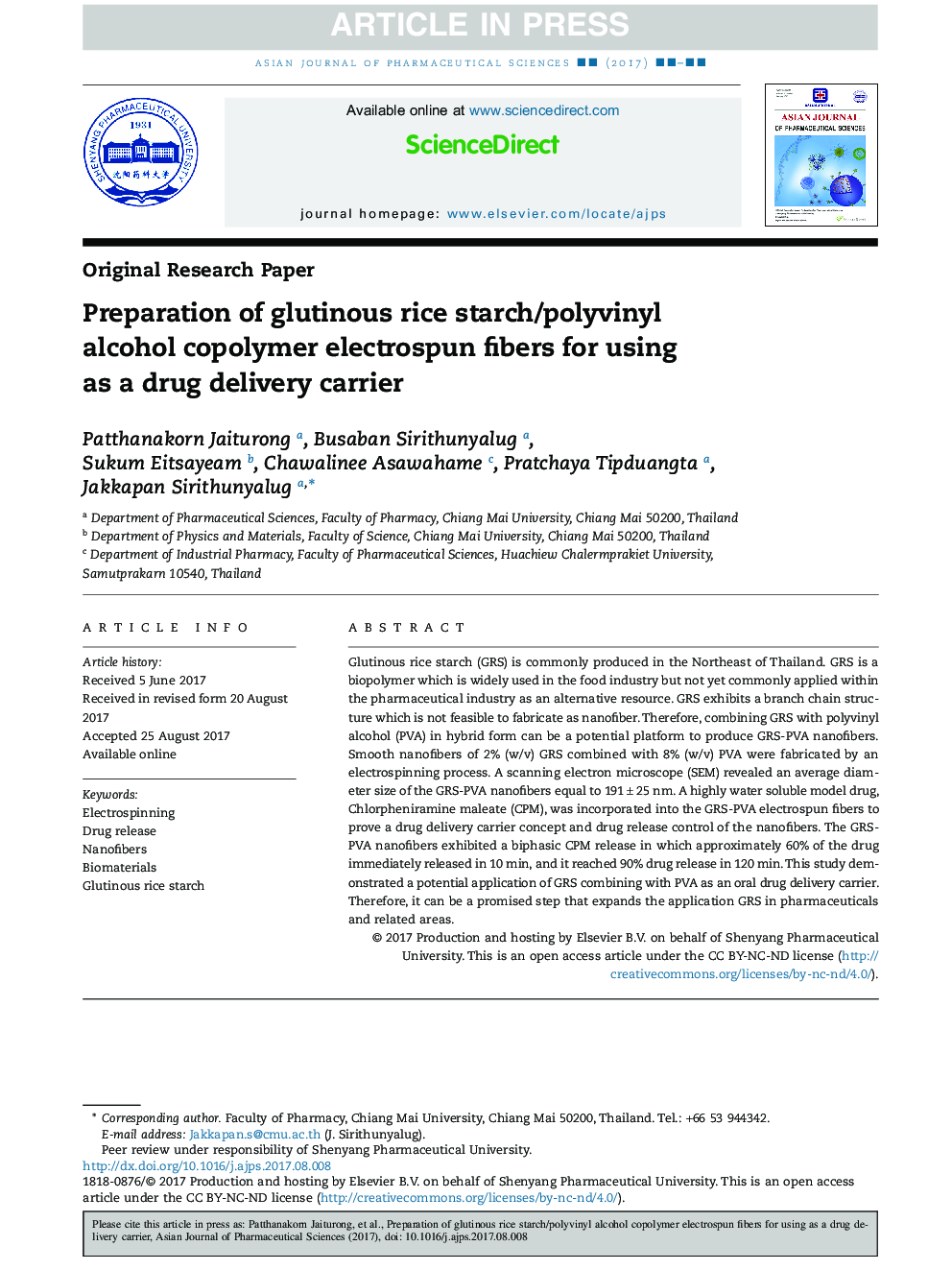| Article ID | Journal | Published Year | Pages | File Type |
|---|---|---|---|---|
| 8518961 | Asian Journal of Pharmaceutical Sciences | 2018 | 9 Pages |
Abstract
Glutinous rice starch (GRS) is commonly produced in the Northeast of Thailand. GRS is a biopolymer which is widely used in the food industry but not yet commonly applied within the pharmaceutical industry as an alternative resource. GRS exhibits a branch chain structure which is not feasible to fabricate as nanofiber. Therefore, combining GRS with polyvinyl alcohol (PVA) in hybrid form can be a potential platform to produce GRS-PVA nanofibers. Smooth nanofibers of 2% (w/v) GRS combined with 8% (w/v) PVA were fabricated by an electrospinning process. A scanning electron microscope (SEM) revealed an average diameter size of the GRS-PVA nanofibers equal to 191â±â25ânm. A highly water soluble model drug, Chlorpheniramine maleate (CPM), was incorporated into the GRS-PVA electrospun fibers to prove a drug delivery carrier concept and drug release control of the nanofibers. The GRS-PVA nanofibers exhibited a biphasic CPM release in which approximately 60% of the drug immediately released in 10âmin, and it reached 90% drug release in 120âmin. This study demonstrated a potential application of GRS combining with PVA as an oral drug delivery carrier. Therefore, it can be a promised step that expands the application GRS in pharmaceuticals and related areas.
Related Topics
Health Sciences
Pharmacology, Toxicology and Pharmaceutical Science
Pharmaceutical Science
Authors
Patthanakorn Jaiturong, Busaban Sirithunyalug, Sukum Eitsayeam, Chawalinee Asawahame, Pratchaya Tipduangta, Jakkapan Sirithunyalug,
